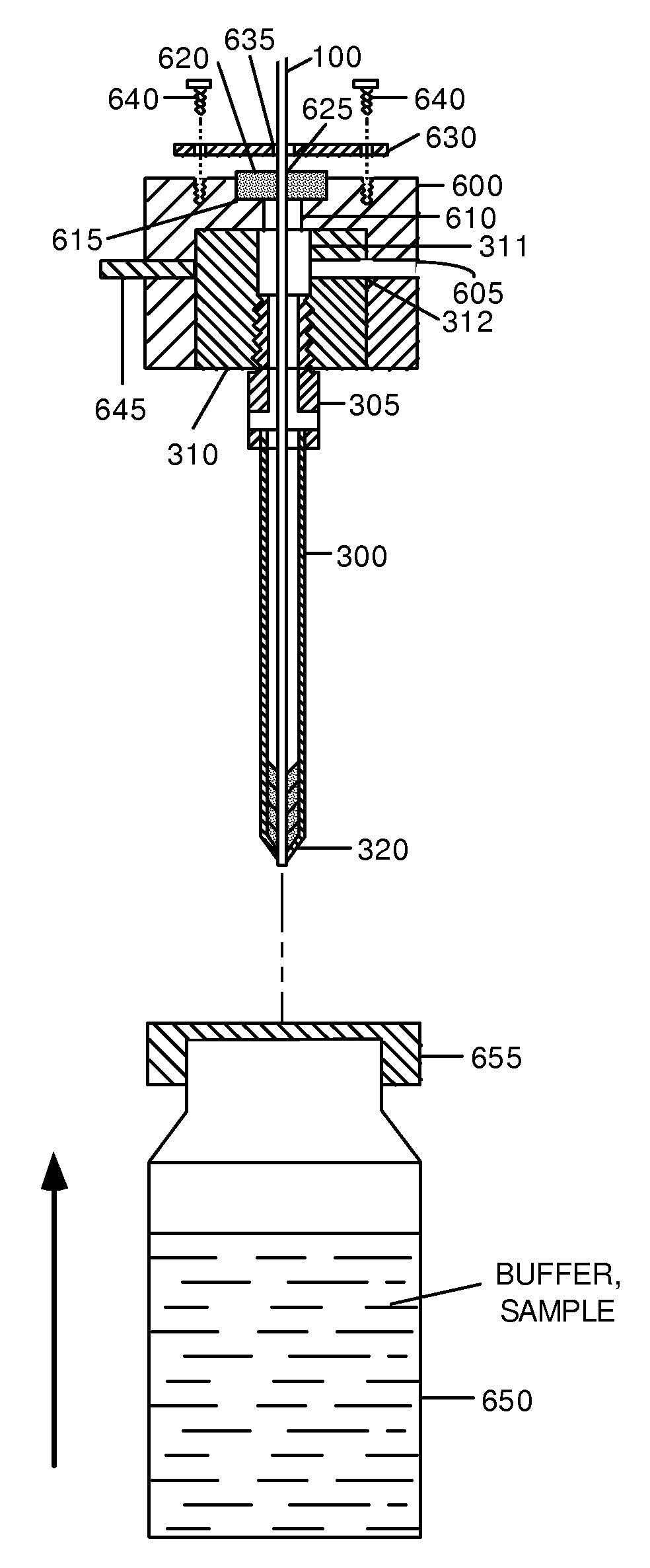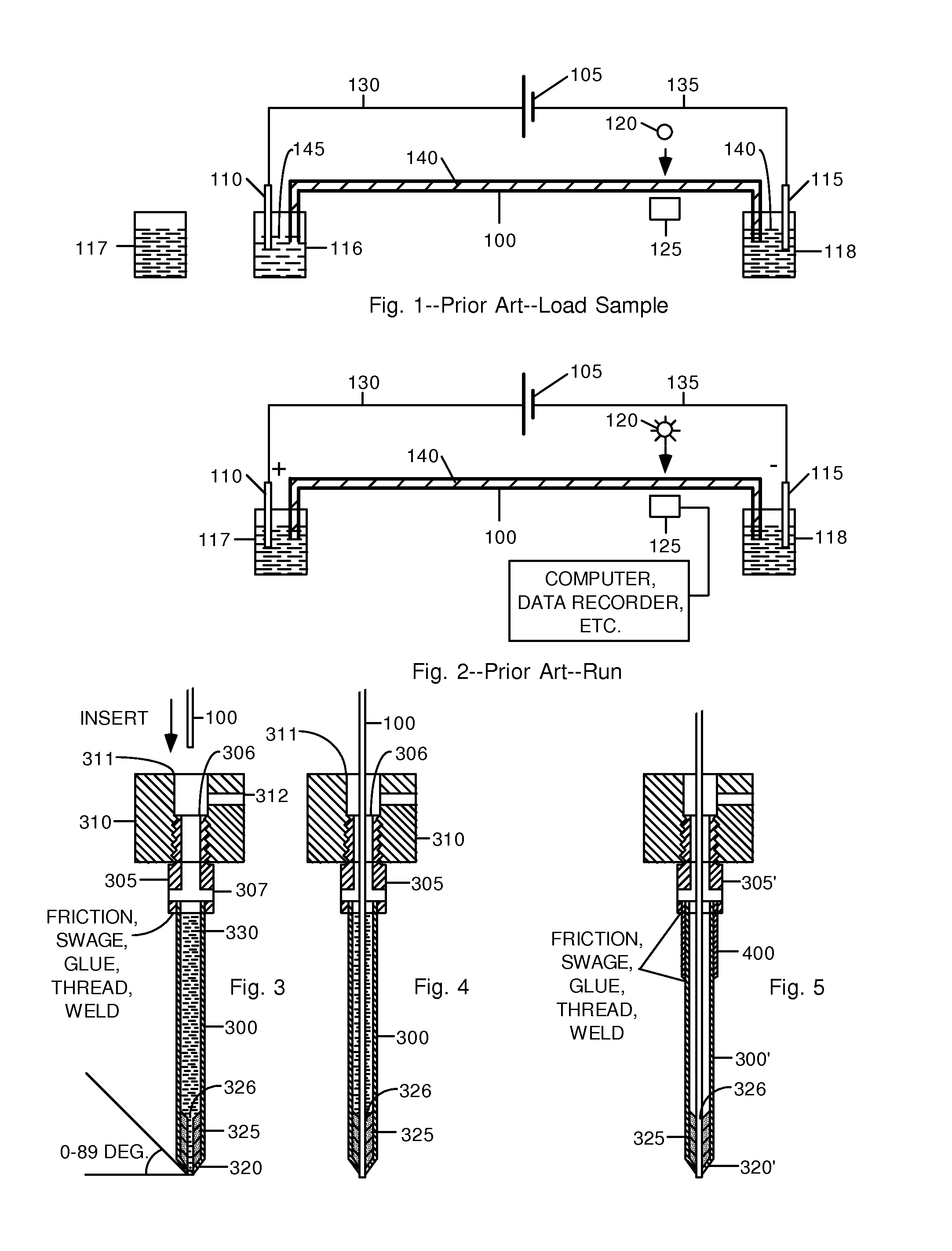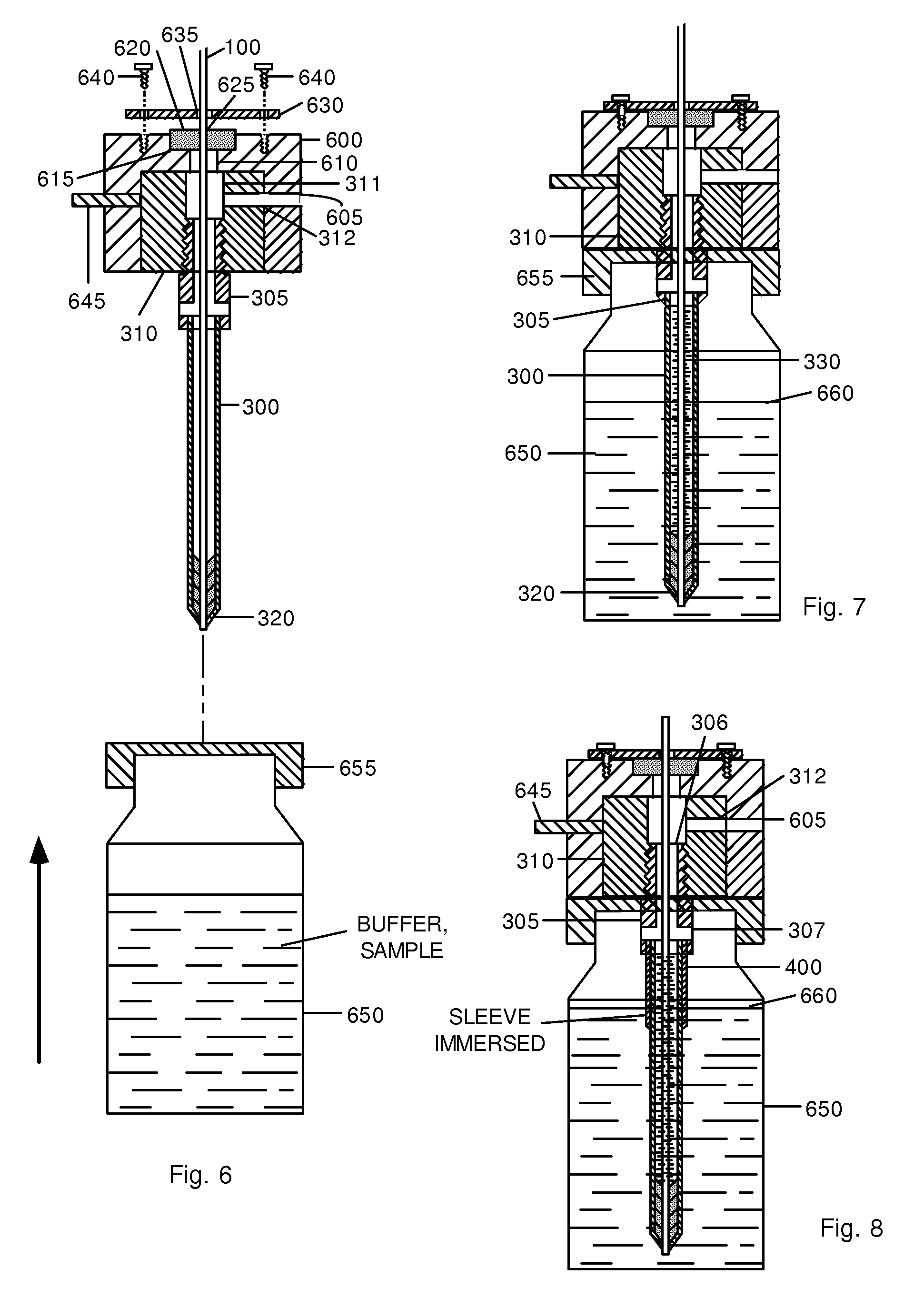Electrode for capillary electrophoresis
- Summary
- Abstract
- Description
- Claims
- Application Information
AI Technical Summary
Problems solved by technology
Method used
Image
Examples
Example
First Embodiment—FIGS. 3 Through 5
[0027]FIGS. 3 through 5 show sectional side views of two aspects of a first embodiment.
[0028]In the prior-art apparatus of FIGS. 1 and 2, the end of capillary tube 100 is merely positioned below the surface of the contents of containers 116, 117, and 118. In many cases, such containers are sealed at the top by a thin membrane, usually rubber, as described below. The membrane must be pierced so that capillary tube 100 can be inserted into these contents. Capillary tube 100 doesn't have sufficient strength to pierce a membrane by itself and a strengthening element is required. When the prior-art apparatus is in use, Joule heating at the electrodes can cause decomposition of the sample being separated.
[0029]First Aspect.
[0030]FIGS. 3 and 4 show a first aspect of a first embodiment of a capillary electrophoresis electrode. Instead of an isolated metal wire electrodes 110 and 115 in FIGS. 1 and 2, a tubular electrode is designed to provide both thermal a...
PUM
 Login to View More
Login to View More Abstract
Description
Claims
Application Information
 Login to View More
Login to View More - R&D
- Intellectual Property
- Life Sciences
- Materials
- Tech Scout
- Unparalleled Data Quality
- Higher Quality Content
- 60% Fewer Hallucinations
Browse by: Latest US Patents, China's latest patents, Technical Efficacy Thesaurus, Application Domain, Technology Topic, Popular Technical Reports.
© 2025 PatSnap. All rights reserved.Legal|Privacy policy|Modern Slavery Act Transparency Statement|Sitemap|About US| Contact US: help@patsnap.com



